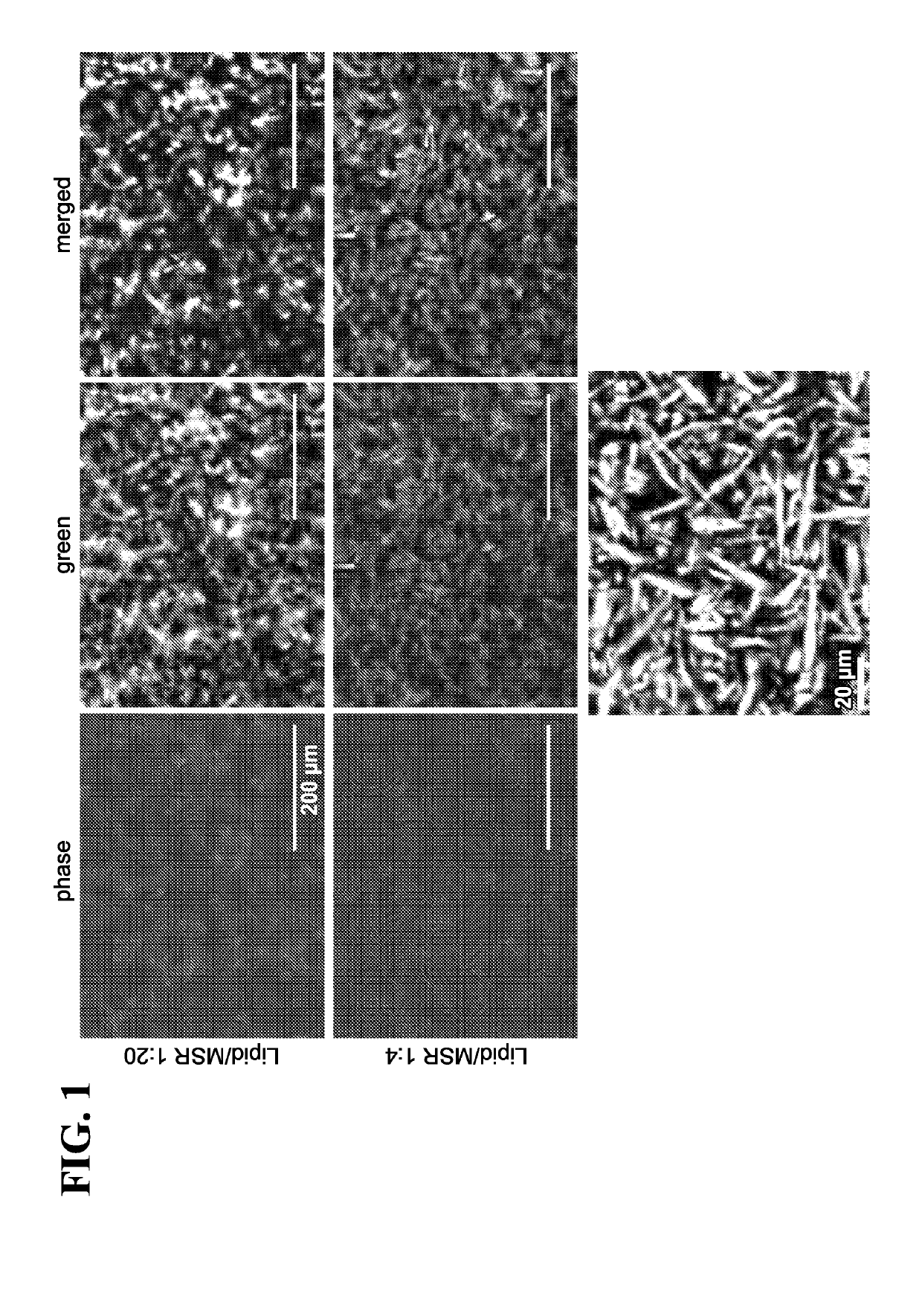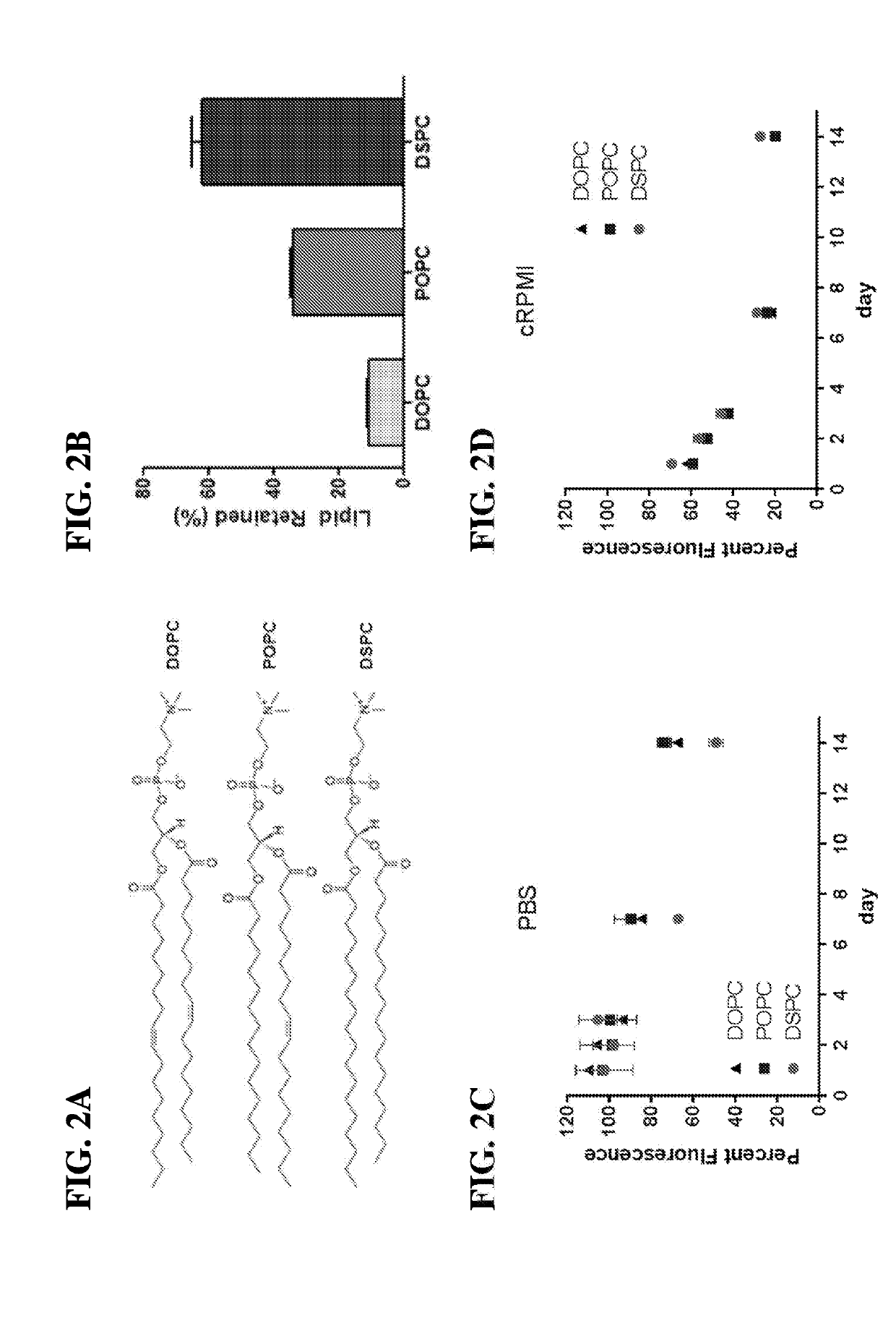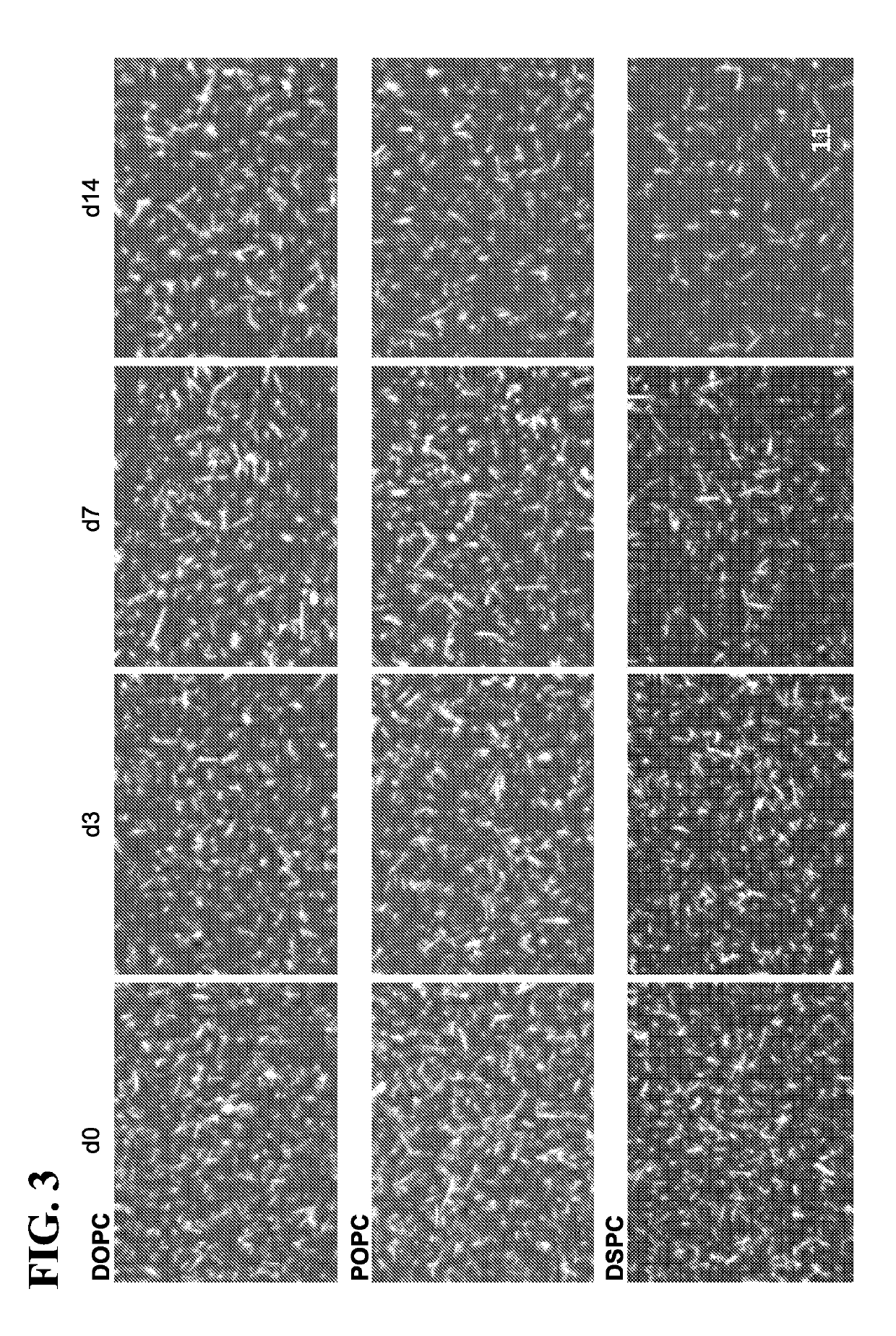Antigen-presenting cell-mimetic scaffolds and methods for making and using the same
- Summary
- Abstract
- Description
- Claims
- Application Information
AI Technical Summary
Benefits of technology
Problems solved by technology
Method used
Image
Examples
example 1
ion of Scaffolds and Microscopic Analysis of the Assembled Structures
[0391]Antigen-presenting cells-mimetic scaffolds (APC-MS) were assembled using the methodology described below. Briefly, a base layer containing high surface area mesoporous silica micro-rods (MSR) was first provided, onto which various T-cell homeostatic agents, e.g., interleukins such as IL2 and / or cytokines such as TGF-beta, are optionally loaded. In certain embodiments, it may be preferable to load the homeostatic agents on to the MSR layer. Then, a continuous, fluid-supported lipid bilayer (SLB) was layered on the base layer, thereby generating an MSR-SLB scaffold. If the homeostatic agents are not directly loaded on the MSR layer, then they can be loaded after SLB payload has been applied on top of the MSR layer. Then, a blocking agent such as BSA may be applied to block non-specific integration sites in the MSR-SLB scaffold, after which, one or more T-cell activating molecule(s) and T-cell co-stimulatory mol...
example 2
of the Functional Properties of the APC-MS Release of Homeostatic Factors such as IL-2
[0396]APC-MS containing mesoporous silica rods (MSR) and supported lipid bilayer (SLB), which further contain IL-2 were manufactured using the methods described in Example 1. The release of IL-2 from these MSR-SLB compositions was analyzed using staining techniques and / or binding assays. The results are presented in FIGS. 6A and 6B. As illustrated in the electron micrograph of FIG. 6A, high surface area pores of MSRs are available for potential adsorption of IL2 or other soluble payloads (scale bar=100 nm). The plot showing cumulative IL-2 release over a 15-day period (FIG. 6B) shows that the APC-MS of the invention are capable of releasing homeostatic agents such as IL-2 in a controlled and sustained manner during the entire course of the two-week study period.
Association with T-Cells
[0397]Antigen presenting cell-mimetic scaffolds containing MSR-SLB scaffolds (APC-MS) were incubated with media con...
example 3
Loading
[0398]The APC-MS containing MSR-SLB were then loaded with various stimulatory molecules, co-stimulatory molecules and / or T-cell homeostatic agents and the resulting structures were analyzed with fluorescence microscopy. Four different types of MSR-SLB scaffolds were analyzed—(1) nude MSR-SLB scaffold (control); (2) MSR-SLB containing conjugated antibodies; (3) MSR-SLB containing IL-2; and (4) MSR-SLB containing conjugated antibodies and IL-2. The photomicrographs are shown in FIG. 8 (low resolution images are on the left and high resolution images are on the right). The top panel (greyscale images) contains phase-contrast microscope images of each of the aforementioned MSR-SLB scaffolds. The bottom panel merges images capturing lipid fluorescence with the greyscale images of mesoporous silica microrods (MSR). The images on the right show MSR-SLB scaffolds at high magnification (scale bar=20 μm).
PUM
| Property | Measurement | Unit |
|---|---|---|
| Time | aaaaa | aaaaa |
| Time | aaaaa | aaaaa |
| Time | aaaaa | aaaaa |
Abstract
Description
Claims
Application Information
 Login to View More
Login to View More - R&D
- Intellectual Property
- Life Sciences
- Materials
- Tech Scout
- Unparalleled Data Quality
- Higher Quality Content
- 60% Fewer Hallucinations
Browse by: Latest US Patents, China's latest patents, Technical Efficacy Thesaurus, Application Domain, Technology Topic, Popular Technical Reports.
© 2025 PatSnap. All rights reserved.Legal|Privacy policy|Modern Slavery Act Transparency Statement|Sitemap|About US| Contact US: help@patsnap.com



